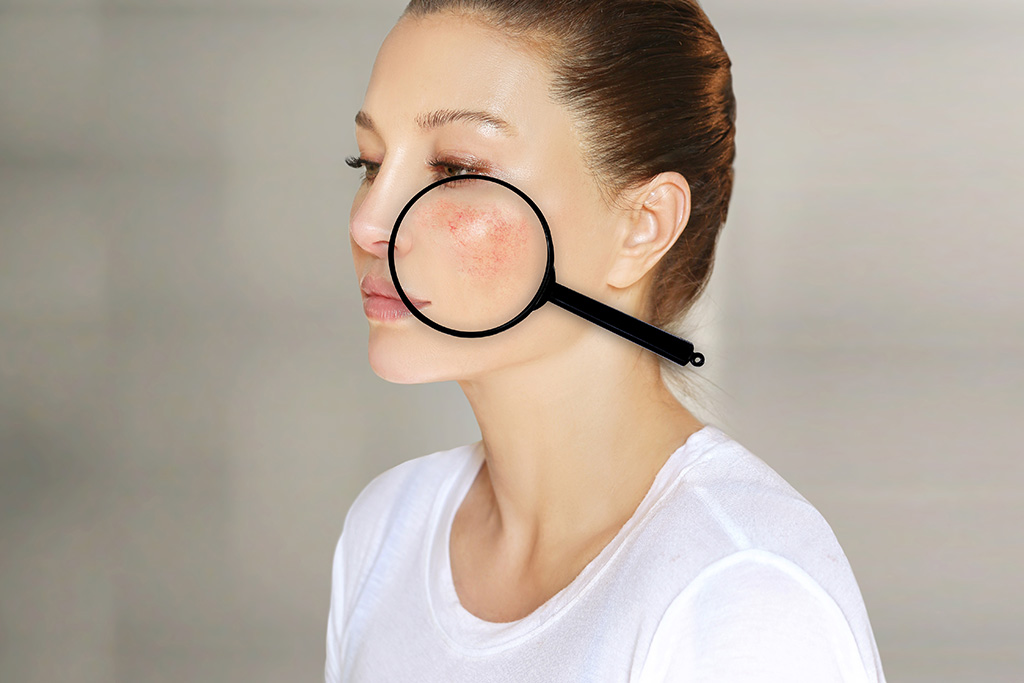
Rosacea
I cannot even begin to tell you how often I hear “I have Rosacea” and I immediately want to say, “No you don’t”. Some of them may have it, after all it does affect more than 16 million Americans, but redness in skin is not automatically rosacea. Most of my patients who claim to have rosacea have incorrectly self-diagnosed the disease because their skin is excessively red. Alone, redness is classified as a condition known as Couperose. Couperose is a loss of elasticity in small capillary walls, resulting in dilated vessels which present as increased redness in the skin. People with couperose experience diffuse redness that can increase with certain triggers like extreme heat or cold, spicy foods, exercise, alcohol consumption, or any other stimuli that causes an increase in blood flow. All the fun stuff.
The Difference Between Couperose and Rosacea
Couperose, is easily treated with pulsed light therapies like IPL or BBL. IPL or intense pulsed light, is the use of wavelengths of light to target browns and reds in the skin. BBL or broad band light, is in my opinion, a more precise solution because it is the use of one specific wavelength used to target one specific issue at a time. And, bonus, we can still treat several problems in one appointment because the energy can be layered once we switch the filter to a new wavelength. Another way of addressing couperose is the use of topical products containing Niacinamide (B3) which strengthens vessel walls, as well as antioxidant and anti-inflammatory ingredients to calm flare-ups. As a medical aesthetician, you should be able to recommend products or treatments for your patient’s specific needs. If their redness is couperose and not rosacea, then they should consider themselves lucky. Rosacea is much more complex and often requires medical intervention.
Rosacea is a chronic disease of the skin whose cause is still unknown. It has no cure, but its symptoms can be managed. Rosacea “flares up” cyclically with occurrences lasting for weeks or even months then going away for some time before returning. Like couperose, flare-ups are caused by any number of triggers that dilate vessels. While redness of the skin is a symptom of rosacea, its trademark symptom is small red pus-filled bumps that appear during a flare-up. There are four different subtypes of rosacea and each comes with its own set of unique symptoms beyond redness and bumps however, it is important to know that it is possible to have more than one subtype at any given time.
Types of Rosacea
Erythematotelangiectatic (ETR)
The first subtype of rosacea, erythematotelangiectatic…we’ll just go with ETR, is associated with redness, flushing, visible broken blood vessels, swelling, increased sensitivity, stinging, burning, dry, rough and scaly skin. This type is commonly found in people with lighter skin usually of Celtic or Scandinavian decent. It is also more common in women than men, but men tend to have more severe symptoms. This type of rosacea can be treated with topical creams IPL or BBL, and in some cases prescription antibiotics and retinols.
Papulopustular (Acne Rosacea)
Papulopustular or acne rosacea is the second subtype and is also commonly found in middle-aged women. This subtype is often mistaken for acne because of its acne-like lesions, but they are also accompanied by extreme redness, oily, sensitive skin that has visible broken blood vessels and raised patches. The treatment of this particular subtype can vary depending on who you ask. Some dermatologists treat it with acne medications while others treat it with strong anti-inflammatories. Treating acne rosacea can be tricky and take some time and a few different attempts to figure out what works best for individual needs.
Rhinophyma
People often reference the famous American comedian, actor, juggler and writer, W.C. Fields when talking about rosacea. Fields rose to fame in the 1920’s as a comedic performer with the ‘Zigfield Follies’ His perpetually drunk, comic persona was a probably a real-life trigger for his rosacea. Rhinophyma is a rare form of rosacea characterized by a thickening of the skin on your nose. This subtype is particularly common in men and is often one of several subtypes present in the skin.
Ocular Rosacea
The fourth subcategory is Ocular rosacea with symptoms centered around the eye area. If you have dry itchy eyes with visible broken blood vessels on the eyelids, bloodshot eyes or diminished vision, cysts on the eye with burning and stinging sensation you might want to see an ophthalmologist to be evaluated for Ocular rosacea
Learn How to Treat Rosacea at Med-Surg Academy in Phoenix
No matter what is causing your patient’s redness there are treatment options, and while you can help mitigate flare-ups, it is best to advise patients to seek medical attention. An empanada with jalapeño sauce and a margarita might sound good, but they are poor choices those with rosacea. Avoiding triggers can be very effective for symptom management, but for additional support a dermatologist should be your patient’s next stop.